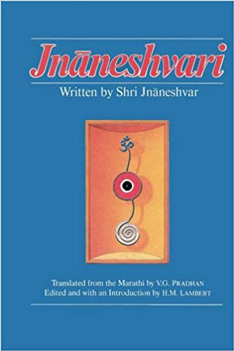At a family gathering a few years ago I noticed a large ant crossing the carpet. Suddenly, my ten-year-old nephew stomped on the ant, trying to kill it. He was surprised when I cried, “Stop! Don’t kill it. He’s done you no harm!” He looked perplexed. Ants are sometimes a problem in his home. They come in through cracks in the walls and swarm the kitchen, spoiling food.
In this example, neither of us acted wrongly. My nephew sought to save food and follow his parents’ advice. I aimed to act with compassion and preserve a life—a familiar theme on the spiritual journey.
Universal Rules for Non-Violence
The moral directive “Thou shalt not kill” tops the list of every religion, philosophy, and spiritual path. It’s as old as Moses himself. The applications of this mandate are far-reaching, ranging from the gross act of murder to preserving the safety of the lowliest creature.
The yogi’s equivalent to the commandment “Thou shalt not kill” is ahiṁsā. Ahiṁsā is one of the rules for self-control (yamas) listed in Patañjali’s Yoga Sutras.
The Sanskrit term ahiṁsā may be translated as non-injury, non-violence, or harmlessness. Ahiṁsā means to avoid inflicting pain or harm—physically, mentally, or verbally—on any living creature or on oneself. Speaking unkindly might injure others. Angry, hateful, or vengeful thoughts are also forms of violence. They are the seeds of violent actions.
Jñāneshvar on Harmlessness
Jñāneshvar, the thirteenth-century child saint, describes a person established in ahiṁsā. I’ve revised his poetic commentary in my own words for ease of reading.
Jñāneshvar begins:
I will express my own views to help you understand the inner meaning of harmlessness. It seems insignificant, but it can only be understood when many views are considered. Listen now to a description of the yogi who is established in harmlessness.
Harmlessness Expressed by Daily Life
Whether a person has fully understood the nature of harmlessness may be judged from his daily life, just as a touchstone reveals inferior quality in gold.
A bee lands gently on a lotus flower, fearing its pollen might be disturbed. In the same way, the yogi believes that the smallest atom is full of minute lives. He walks over the ground softly and with compassion. His gaze is steady for he holds that the universal spirit is in all beings.
A mother cat lovingly carries her young in her mouth. Her sharp teeth do not hurt them. Similarly, the yogi acts with care and kindness. He spreads goodwill in all directions, protecting other creatures by his own actions.
Harmlessness Expressed in Speech
The yogi avoids unnecessary speech. He maintains silence to avoid hurting others’ feelings. The yogi will not distress anyone or cause them to suffer doubt or fear. His speech is free from sarcasm, never provoking ridicule. In his speech there is no agitation or haste, no guile or false hope, no doubt or deceit. The yogi’s speech is full of compassion.
If a yogi is requested to speak, he does so with affection. Even before any word is uttered love springs from him. The yogi’s words are tender and true, like waves of nectar. They are moderate and sincere. Those who listen feel he is like a loving parent.
Harmlessness and the Mind
All these outward expressions indicate manifestations of the inner mind. If harmlessness is lacking in the mind, how can it find outward expression?
The mind works through the channel of the senses. When a seed is sown in the ground it becomes a tree. In the same way, the inner mind manifests itself through one’s actions. Every thought, conscious or subconscious, is expressed in action.
When harmlessness is well established in the mind, it spreads out like the fragrance emitted from a flower. Just as a teacher holds the hand of a child and easily writes a sentence, so the mind transmits its kindliness to the yogi’s actions.
A person who has entirely renounced doing harm in speech, thought, and outward action is an abundant storehouse of wisdom. If you wish to understand perfection in harmlessness, which is heard, spoken and written of in books, you have only to keep company with such a yogi. (Jñāneshvari 13:216-317)
Why It’s Important to Practice Non-Injury
As spiritual seekers, we work hard to make progress on our path. Yogis meditate daily and strive to do good works. As a result, the mind is purified. Then we begin to experience inner peace and joy. The practice of non-injury is essential to preserving these experiences.
In the spiritual sense, if we harm another being, we harm ourselves. Suppose we let jealousy or anger fill our thoughts. These feelings then lead to angry words or violent actions. My Guru says, “One minute of harsh words destroys the benefit of hours—even months—of spiritual practice.” Is it worth it? Of course not. That’s why we diligently protect our spiritual bank balance.
The Practice of Non-Injury
Walking the spiritual path is a joyous journey. It’s not difficult, but it requires awareness, practice, and vigilance. Here are some suggestions to help you strengthen ahiṁsā:
- Increase your awareness: This is always the first step to change. As Jñāneshvar suggests, judge yourself by the actions of your daily life. How compassionate are you? Do you speak kindly to others? Is your mind quiet and at peace? The answers to these questions are all clues to your inner nature.
- Keep company with yogis who have perfected harmlessness: The Masters included in Quiet Karma’s articles are established in non-injury. Read their writings and biographies. In this way, their qualities will become a part of yours.
- Remember that every action begins with a tiny seed of thought. All actions, mental, verbal, or physical, have their effects. Consider what results you want. Then think and act in harmony with your desired outcome.
How do you practice ahiṁsā? Everyone has their own way of applying this principle in their daily lives. Please share your experience with others in the comments section below.
Chityānanda has been a disciple of Svāmī Gurupremānanda Sarasvatī since 1975. She teaches meditation and yoga as a spiritual path in Santa Cruz, California.



In high school science we learned a basic physical law; “for every action there is a equal and opposite reaction.” We learned in yoga, that there is a similar, universal spiritual “law” that is all inclusive ( mental, physical, spiritual) I guess you can use the same wording, as stated above, it is called – karma
Thank you, Tosh. The law commonly applied to physics does also apply in a spiritual sense. The difference is that karma is not so easily measured as the physical world. It’s not so obvious why a certain event is experienced. Karma is yoga’s explanation for why bad things happen to good people. Namaste.
Non injury covers many fields. Sometimes it’s easy to judge and criticize. Creating mental disharmony causes mental anguish; harmony is a powerful force. One would be surprised to find moderation has it’s own bliss.
Thank you, Tony. I agree that it’s important to realize that even our thoughts can cause injury–if not to another, then certainly to ourselves. Namaste.
I don’t think about being compassionate, I just do it. My mother always supports those who are down trodden ie: the Davids, rather than the Goliaths, of this world. I guess this trait has been passed down to me by example and I’m ok with it. I practice ahimsā silently. Any other path seems fraught with ego. Thanks for this great post, Svāmī.
Thank you, James. Yogis would say that both you and mother have practiced ahimsā in past lives. That’s why it comes so naturally for you. Namaste.